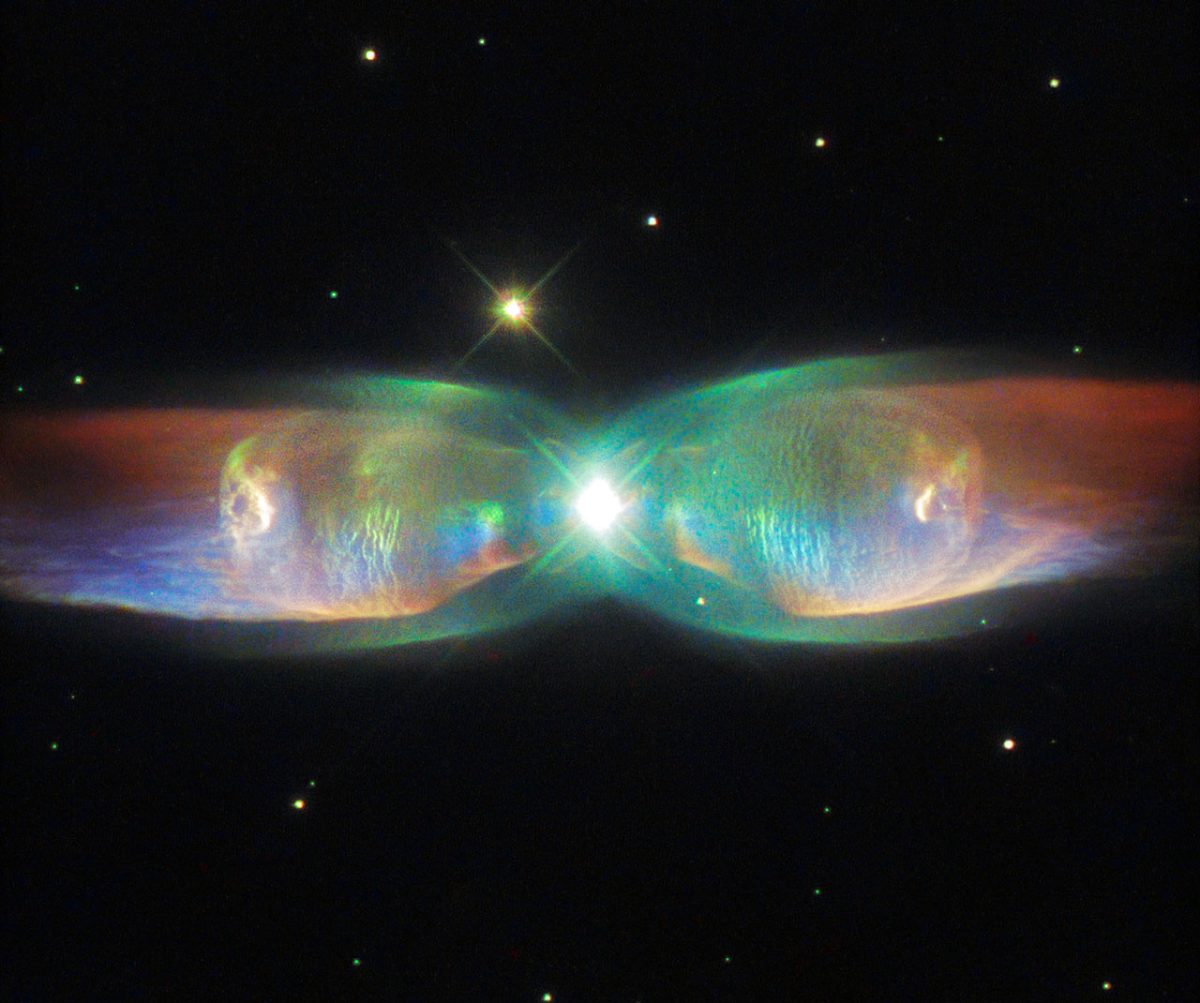Certain Nebulae Adorn the Milky Way Like Jewels, and Scientists Aren’t Sure Why
Posted on Categories Discover Magazine

“Ghost stars,” or planetary nebulae, are some of the most beautiful objects in the cosmos. Formed when a red giant star burns through its nuclear fuel and sheds its outer layers, the nebulae (which have nothing to do with planets) expand outward in striking patterns. Some of these exhibit strange properties, according to a new paper, which studied 136 nebulae using the European Southern Observatory’s Very Large Telescope in Chile.
Many nebulae close to the galactic bulge – the central section of the Milky Way crowded with stars, gas and dust – align with the galactic plane in a manner NASA once referred to as “bowling pins set up in an alley.” Scientists have worked to explain this since a University of Manchester Ph.D. student, Bryan Rees, discovered the strange configurations a decade ago.
How Planetary Nebulae Form
When stars die and form planetary nebulae, they leave behind a small stellar remnant called a white dwarf, which cools slowly over billions of years. In the case of binary star systems, where two stars orbit each other, the second star remains in orbit around the white dwarf, producing a binary planetary nebula. This is the only type of system that aligns with the galactic plane, the new study found.
What’s more, 80 percent of them are bipolar nebulae, meaning their stars eject gas from two poles, in an hourglass shape.
“The significance in this research lies in the fact that we now know that the alignment is observed in this very specific subset of planetary nebulae,” said Albert Zijlstra, a professor of astrophysics at The University of Manchester, in a statement. “Planetary nebulae offer us a window into the heart of our galaxy, and this insight deepens our understanding of the dynamics and evolution of the Milky Way’s bulge region.”
What Causes Nebulae to Align?
The paper by co-authors Zijlstra and Shuyu Tan, a student at the University of Hong Kong, proposes that the alignment happened very early in the life of the binary system, before the nebulae had even formed. Another co-author, Quentin Parker, a professor at the University of Hong Kong, has proposed that the rapid orbital movement of the binary stars was responsible.
Whatever the cause, it must be capable of exerting a constant and controlled influence over billions of years, the researchers have said. They calculated whether present-day magnetic fields in the bulge could have aligned the nebulae, but the force wasn’t great enough. The bowling pin configuration must have been “frozen in” in the past, the paper says.
Read More: How Many Galaxies Are There? Astronomers Are Revealing the Enormity of the Universe